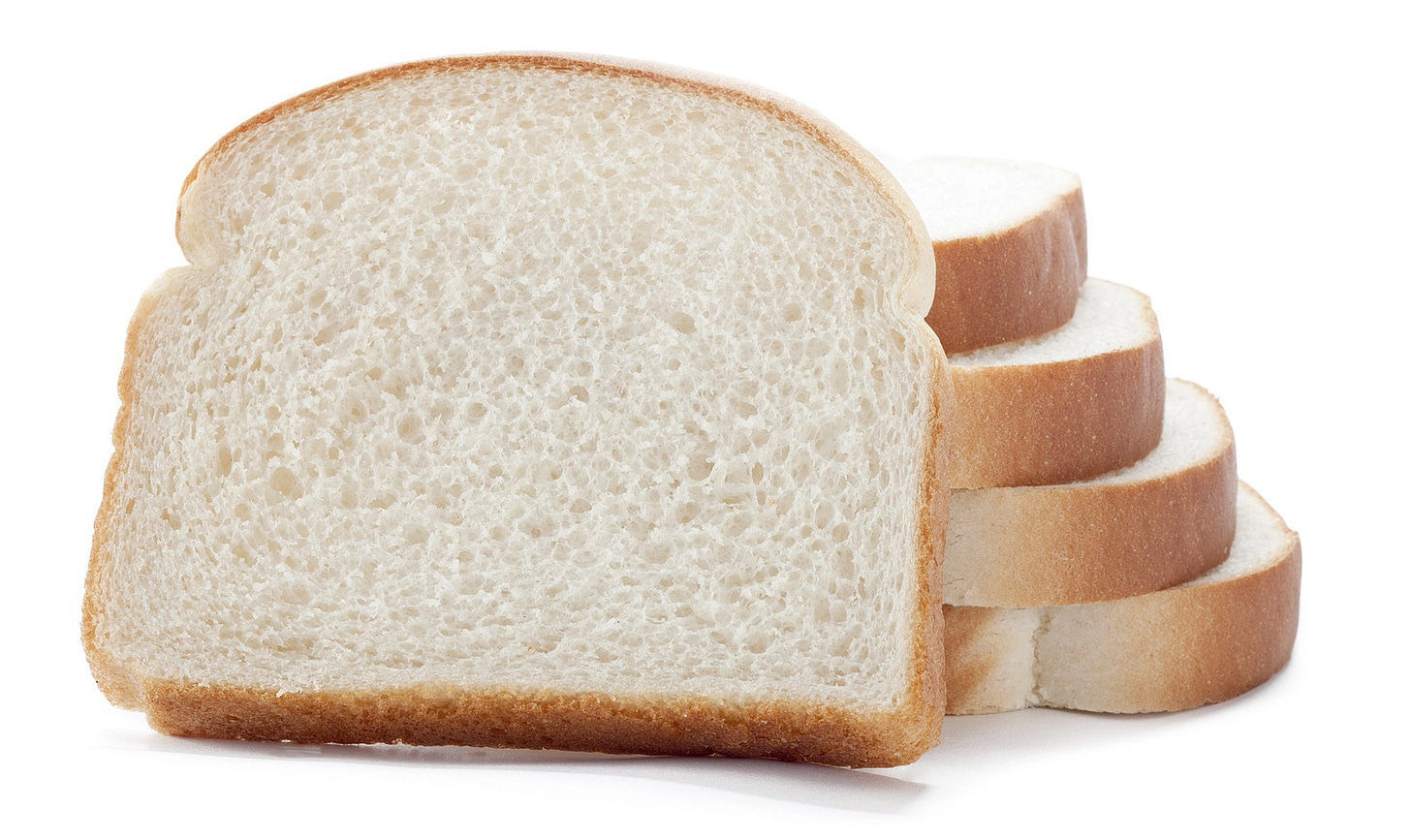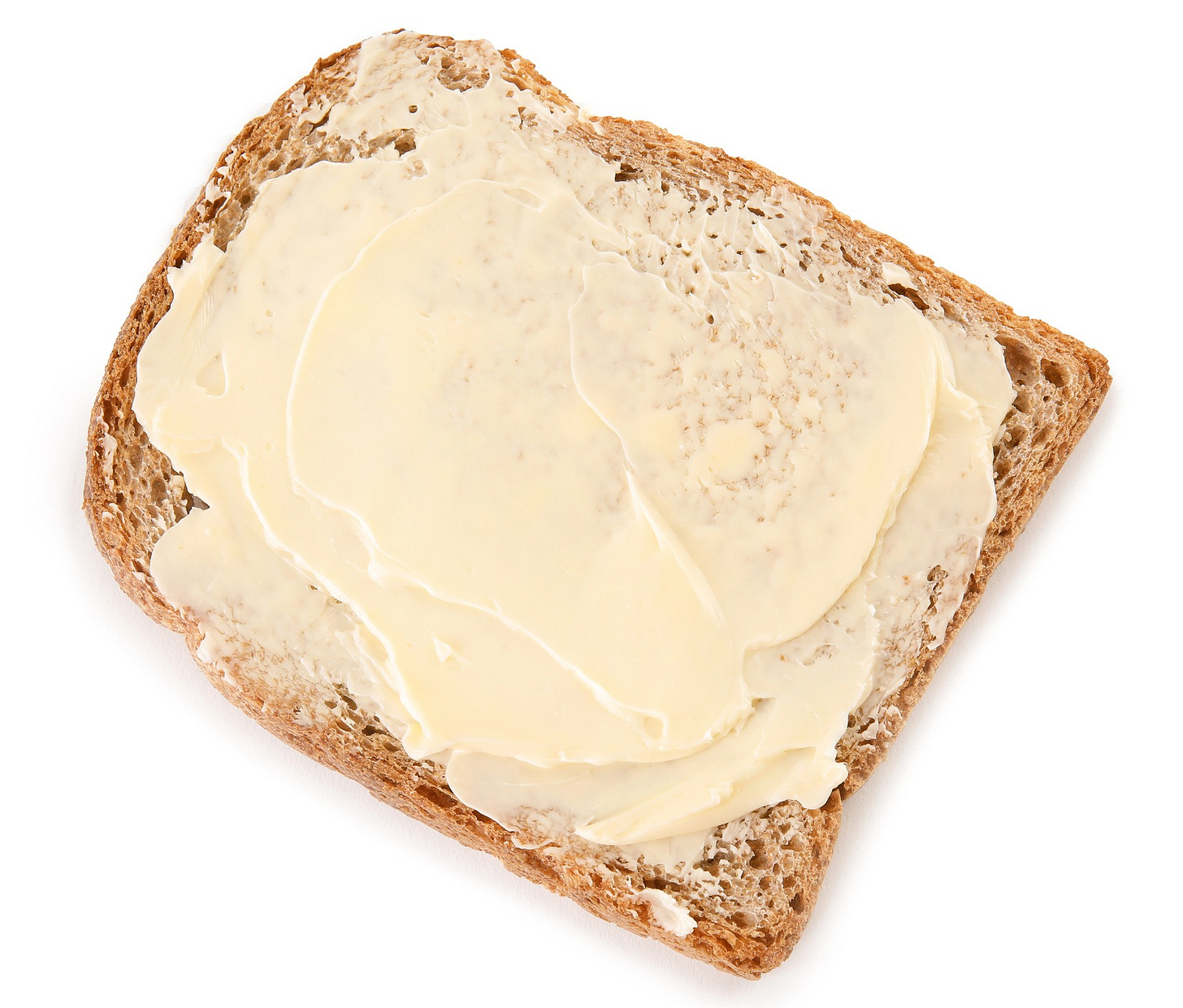Welcome to An American's Guide to British Life - my lighthearted celebration of British culture! As an American living in the UK for the past three years, I love exploring the delightful cultural differences and similarities that make life here so interesting. These articles are written with affection and humor, never judgement and always with respect.
I thought I understood sandwiches.
After over three decades of American sandwich making, I felt confident in my bread-filling-bread construction abilities.
Then I watched my British partner methodically butter a slice of bread before adding peanut butter, and realized I understood nothing.
"What are you doing?" I asked, genuinely concerned for their mental wellbeing.
"Making a peanut butter sandwich," they replied, as if adding butter to an already butter-named spread was the most logical thing in the world.
This, I would learn, was just the beginning of my education in British sandwich culture – a world where butter is mandatory on everything and something called 'coronation chicken' - a cold chicken mixture with curry and raisins, somehow became a sandwich staple.
If sauces are cultural ambassadors, then sandwiches are entire diplomatic missions. They reveal not just what a culture eats, but also how it thinks about food, convenience, tradition, and what constitutes a proper meal.
And British sandwich culture, I've discovered, operates on principles that would make most Americans question everything they thought they knew about putting things between bread.
The Foundation: Why British Bread Changes Everything
Before we dive into buttering philosophy and pickle mysteries, we need to talk about the foundation of every sandwich: the bread itself. British bread is fundamentally different from American bread in ways that explain so much of what initially seems bizarre about British sandwich culture.
American sandwich bread is engineered for durability and sweetness – soft, squishy, slightly sweet, designed to survive lunch boxes and complement bold flavors like peanut butter.
British bread comes from an entirely different philosophy: denser, less sweet, more varied in texture. A British white loaf generally has more structure, firmer crumb, and neutral flavor designed to complement rather than compete with fillings.
This difference explains the butter imperative. American bread's soft texture can handle most fillings without help. The denser structure of British bread benefits from the moisture and richness that butter provides. Butter isn't just tradition – it's functional engineering.
The variety in British bread also changes the sandwich game entirely. While Americans have plenty of bread options – white, wheat, rye, sourdough, pumpernickel, and countless others – British sandwich makers navigate a complex landscape of crusty rolls, soft baps, crusty bloomer loaves, and specialized sandwich breads, each designed for specific purposes.
The Butter Imperative: Why Everything Gets Buttered
Let's address the elephant in the room – or rather, the butter on the peanut butter sandwich. In Britain, it seems that butter isn't optional on sandwiches; it's a foundational part of the infrastructure. Nearly every single sandwich gets a layer of butter spread edge to edge before any other ingredient is even considered.
This goes beyond preference– it's sandwich architecture. The butter serves as a moisture barrier, preventing soggy bread disasters that would be catastrophic with British bread's denser structure. It's practical, sensible, and completely baffling to Americans who've spent their lives making perfectly functional sandwiches without this extra dairy layer.
But here's where it gets truly mind-bending for American sensibilities: they butter peanut butter sandwiches. Yes, you read that correctly. A spread that's literally called "peanut BUTTER" gets additional actual butter. It's like putting ice on ice cream or adding more water to water.
When I questioned this logic, my partner patiently explained that without butter, the peanut butter doesn't spread properly and tears the bread. Which, admittedly, is a valid point given British bread's firmer texture, but it feels like solving a problem by creating a different, weirder problem. In America, we often accept slightly torn bread as the price of enjoying peanut butter.
The butter imperative extends to everything. Ham sandwich? Butter first. Cheese sandwich? Obviously buttered. Marmite sandwich? Absolutely essential – the butter mellows that intense, salty-yeasty flavor that can overwhelm unbuttered bread. Even when adding mayonnaise, which is essentially eggs and oil whipped into creamy submission, they still add butter underneath.
The American Sandwich Landscape: What I Was Used To
To understand my confusion with British sandwich culture, it helps to know what I considered "normal" sandwich territory. American sandwich culture revolves around a handful of classics that every American child grows up knowing: the peanut butter and jelly sandwich (our childhood cornerstone), BLT (bacon, lettuce, tomato with mayo), ham and cheese (exactly what it sounds like), tuna salad, egg salad, and grilled cheese.
Then there are our regional heroes: the Philly cheesesteak (thin-sliced steak with melted cheese, preferably Cheez Whiz if you're being authentic), the club sandwich (turkey, bacon, lettuce, tomato, mayo, stacked high), and the Reuben (corned beef, Swiss cheese, sauerkraut, and Russian dressing on rye bread).
American sandwiches tend to be straightforward in their naming and generous in their portions. A turkey sandwich is turkey with maybe lettuce, tomato, and mayo. A roast beef sandwich is roast beef, possibly with horseradish. We like our ingredients recognizable and our flavors bold rather than complex. Customization is king – you can walk into any American deli and build your sandwich exactly how you want it, choosing every ingredient from bread to cheese to condiments.
This context makes British sandwich culture all the more fascinating – where Americans optimize for size, customization, and straightforward flavors, British sandwiches optimize for flavor relationships, structural integrity, and tested combinations.
The British Sandwich Landscape: What I Discovered

British sandwich culture, by contrast, revolves around a completely different set of classics that every British person seems to know instinctively. Walk into any British sandwich shop and you'll usually find the core lineup: cheese and onion (sharp cheese with raw onion that somehow works), cheese and pickle, tuna mayo (tuna mixed with mayonnaise, no pretense about salad potential), egg mayo (hard-boiled eggs mashed with mayo), and coronation chicken (the curry-spiced chicken mixture we've discussed).
Then there are the supporting players: prawn marie rose (prawns in a pink sauce that's essentially seafood cocktail sauce), ham and mustard (often with English mustard that will clear your sinuses), the bacon butty (crispy bacon on buttered white bread, often with brown sauce), the ploughman's lunch (crusty bread with cheese, pickles, and chutney), and various combinations involving chutneys and pickles that Americans have never heard of.
British sandwiches tend to be precise in their flavor relationships and conservative in their portions. A cheese and onion sandwich is exactly that – the combination has been tested over generations and declared perfect as-is. You don't customize it; you trust that someone has already figured out the optimal ratio of cheese to onion to butter to bread.
The genius of these combinations becomes clear when you see how they adapt to different preparations. My British partner, for instance, makes grilled cheese and onion sandwiches – taking the classic cold combination and applying American grilling technique, then dipping the whole thing in HP Sauce. It's like watching two sandwich cultures have a delicious conversation.
Where American sandwiches are built to individual preference, British sandwiches are designed as complete flavor experiences. Each combination represents a solution to the question "what tastes good together?" rather than "what do you want today?" The names tell you exactly what you're getting, and the combinations have been refined through decades of British lunch culture.
The Great PB&J Mystery: Where Did They Go?
Speaking of peanut butter, let's address one of the most glaring omissions in British sandwich culture: the complete absence of peanut butter and jelly sandwiches. In America, PB&J is childhood incarnate – the training wheels of sandwich making, the lunch box staple, the comfort food that follows you from kindergarten to college dorm rooms.
Here's where terminology gets tricky: what Americans call "jelly" (a smooth, clear fruit spread made from fruit juice), Brits call "jam." What Brits call "jelly" is what Americans call "Jell-O" – the wobbly dessert. Americans also have jam (the chunkier fruit spread), but when we say PB&J, we specifically mean the smooth jelly, not jam.
Grape jelly became the classic American pairing, though we also love strawberry and raspberry with peanut butter. There's a whole universe of American peanut butter combinations: PB and banana, PB and honey, PB and marshmallow fluff (the beloved "fluffernutter"). The smooth sweetness of grape jelly, however, became the gold standard – it doesn't overpower the peanut butter and creates that perfect sweet-salty-nutty trinity.
In Britain? They barely exist. When they do appear, they're usually called "peanut butter and jam," treated as an exotic American curiosity, and often made with the wrong kind of jam entirely. There's no understanding of the sacred ratios, no appreciation for why grape works so perfectly, and definitely no recognition that this combination is basically childhood happiness between two slices of bread.
Part of the issue might be the peanut butter itself. While you can find peanut butter in British shops, there are only a brand or two sweet enough for American tastes – though thankfully Skippy is available for homesick Americans. British peanut butter tends to be less sweet and more, well, nutty. Plus, I suspect Brits don't have the same relationship with peanut butter that Americans do – we'll eat it straight from the jar with a spoon, which would probably horrify most British people.
Instead, British children grow up on combinations that would perplex American parents: Marmite and butter, jam and butter (no peanut butter in sight), or the classic crisp sandwich. The absence of PB&J feels like a cultural blind spot, as if they've missed out on one of humanity's greatest culinary discoveries.
The few times I've managed to recreate a proper PB&J (using imported American peanut butter and grape jelly), British friends have reacted with polite confusion. "It's quite sweet, isn't it?" they'll say, which completely misses the point. Of course it's sweet – it's basically edible nostalgia. Raspberry or strawberry jam is the best you can get here, and it works but isn't quite the same as proper grape jelly.
Coronation Chicken: Royal Confusion with Royal Origins
Nothing prepared me for my first encounter with coronation chicken, but the story behind it is actually quite magnificent. The dish was created specifically for Queen Elizabeth II's coronation luncheon on June 2, 1953, by Constance Spry and Rosemary Hume from the Cordon Bleu Cookery School in London. Originally called "Poulet Reine Elizabeth," it was designed to serve 350 people, mostly international representatives.
"It's chicken mayo, but fancy," my British friends explained, which only deepened my confusion. In America, we use the term ‘chicken salad’ for chicken mixed with mayonnaise, maybe some celery and perhaps a few herbs. Simple, straightforward, recognizable as something that was once definitely chicken.
Coronation chicken, however, is chicken salad that went to university, studied abroad, had an identity crisis, and came back wearing a beret and speaking in mysterious curry-scented riddles. The curry ingredients were actually quite remarkable for their time, becoming available just as post-war rationing was ending.
The genius of the original recipe was its diplomatic nature. As Constance Spry wrote, the curry was subtle enough that most guests wouldn't detect it, creating "a delicate and nutlike flavour in the sauce" rather than an obviously foreign dish.
Despite its confusing nature, I've come to appreciate coronation chicken's complexity and royal pedigree. It's like the British took ‘chicken salad’ and decided to make it interesting enough for a queen.
British Flavor Combinations: Cheese, Pickles, and Chutneys
British sandwich culture makes American condiment aisles look embarrassingly simple, and nowhere is this more evident than in cheese combinations. British cheese sandwiches operate on the principle that cheese needs a supporting cast, leading to combinations that initially baffled me.
Cheese and pickle – usually Branston – was my gateway into this world. Branston Pickle is a dark, chunky mixture of carrots, swede, cauliflower, onions, dates, apples, vinegar, molasses, sugar, salt, spices, and tamarind. Americans have pickle relish, which is simple – chopped pickles in vinegar, maybe some sugar. Branston occupies the same cultural space as American pickle relish but with exponentially more complexity. It's sweet, tangy, chunky, smooth, familiar, and completely foreign all at once.
The first time someone offered me a cheese and pickle sandwich, I expected dill pickle slices. What I got was this mysterious brown mixture, but one bite changed everything. The sharp cheese paired with the complex, fruity-tangy pickle creates something greater than the sum of its parts.
Then there's cheese and onion – raw onion that seems aggressive but works because the sharp bite cuts through rich cheese, creating brilliant flavor tension. In America, if we want onion with cheese, we caramelize it or cook it somehow. Raw onion feels confrontational, but the British understood something about flavor balance that escaped American sandwich culture.
Beyond Branston, there's piccalilli – aggressively yellow, chunky with cauliflower, with a sharp mustardy bite that makes American mustard seem polite. It's Branston's punk rock cousin, and when it works with ham or strong cheeses, it's transformative.
British sandwich culture also embraces chutneys: apple chutney, tomato chutney, mango chutney, onion chutney. Rather than simple condiments, they're flavor solutions that create conversation between ingredients, making whole sandwiches more than the sum of their parts.
The Great Salad vs. Mayo Divide
Here's a key linguistic difference that reveals how each culture thinks about sandwich fillings. Americans say "tuna salad" and "chicken salad" – the word "salad" implies these mixtures could theoretically become actual salads but usually end up in sandwiches anyway.
Brits say "tuna mayo" and "chicken mayo." Here, "mayo" refers to a protein-rich mixture, often combined with mayonnaise, specifically designed for sandwiches. No pretense about salad potential – it knows exactly where it belongs.
Americans have these same mixtures too (egg salad sandwiches, tuna salad sandwiches), but we use different naming conventions. The British approach is more honest about function, while the American approach reflects genuine versatility - we actually do serve these as salads too
The genius of British sandwich salads is their preparedness. You can buy them ready-made, properly seasoned, and designed specifically for sandwich deployment. American delis might have chicken salad or tuna salad, but British sandwich shops have perfected the art of salad-sandwich symbiosis.
The Meal Deal Revolution
Nothing exemplifies modern British sandwich culture quite like the meal deal – that triumphant combination of sandwich, crisps, and drink for a fixed price that's become the lunch solution for millions of Brits. While Americans certainly have meal deals, the British version is specifically and uniquely centered around the sandwich as the main event, flanked by its crispy sidekick and liquid companion.
The British take on lunchtime meal deals is distinctly different – it's a sandwich-focused ecosystem that's become as British as queuing politely. Walk into any Tesco, Sainsbury's, or Boots, and you'll find walls of pre-made sandwiches designed to work within this three-part harmony. The sandwich is the star, the crisps provide textural contrast (and are often eaten WITH the sandwich), and the drink completes the nutritional picture.
The meal deal represents everything efficient about British sandwich culture: pre-tested combinations, the right sized portions, and the understanding that lunch should be satisfying without being complicated. You grab a sandwich (pre-made, properly balanced), a packet of crisps that might end up inside said sandwich, and a drink, and you have a complete meal for under a fiver.
The Crisp Sandwich Revolution: When Chips Become Filling
Perhaps nothing illustrates the textural genius of British sandwich culture quite like the crisp sandwich – or "crisp butty" as it's affectionately known. (A "butty" is British slang for sandwich, particularly the kind made with simple, hearty fillings on white bread.)
This is where my American brain nearly short-circuited entirely. While Americans commonly eat chips alongside our sandwiches, Brits put crisps (what Americans call chips) INSIDE their sandwiches. And if potato chips between bread wasn't enough, they also make chip butties with what Americans call thick fries as the filling (also often buttered).
The first time I witnessed someone making a crisp sandwich – white bread, butter, and a handful of salt and vinegar crisps – I thought I was watching someone have a breakdown. In America, chips are often served as a side dish. They're placed next to your sandwich, in a separate bag, or maybe on your plate if you're being fancy. They are not sandwich architecture.
But British children grow up understanding something about textural contrast that American lunch culture misses entirely. A cheese and onion crisp sandwich isn't just cheese and onion flavor; it's the interplay between soft bread, sharp cheese, and the satisfying crunch and concentrated onion flavor of the crisps. The crisps don't just add flavor – they add salt, texture, and an intensity that transforms the entire eating experience.
The genius becomes obvious once you try it. A plain cheese sandwich is fine; a cheese sandwich with cheese and onion crisps is a flavor explosion that somehow makes perfect sense. The crisps provide the textural contrast that keeps each bite interesting, plus they deliver concentrated flavor that complements rather than competes with the other ingredients.
And it's not just cheese sandwiches. Ready salted crisps in a tuna mayo sandwich add salt and crunch. Prawn cocktail crisps (yes, that's a flavor) in an actual prawn sandwich create layers of seafood intensity. Salt and vinegar crisps in a ham sandwich provide acid and texture that brightens the whole thing.
The British have essentially figured out how to make their sandwiches more interesting using what Americans consider a completely separate food category. It's brilliant, practical, and completely obvious once you understand the logic. The tradition is so established that in 2021, Walkers, a British snack manufacturer, released an entire recipe book celebrating "the British tradition of putting crisps in a sandwich" – proving this isn't just childhood nostalgia but legitimate culinary culture.
Though I still can't quite bring myself to make a crisp sandwich as the main event, clearly I haven't reached peak British enlightenment.
The Learning Curve and the Verdict
My British sandwich education revealed what initially seemed like complications – butter on everything, weird flavor combinations, predetermined compositions – as solutions to problems I didn't know existed. I've learned to appreciate proper buttering, Branston's complexity, piccalilli's brightness, and the genius of crisps in sandwiches. The British approach reflects a thoughtful food culture that has evolved to solve real problems and create genuine pleasure.
British sandwich culture isn't better or worse than American sandwich culture – it's just different, operating on different principles and solving different problems. Americans optimize for customization and speed; Brits optimize for flavor relationships and structural integrity.
Both approaches have their merits. American sandwiches offer infinite possibilities and personal expression. British sandwiches offer tested combinations and thoughtful preparation. The real winner is anyone willing to explore both traditions with an open mind and adventurous palate.
Though I still think butter on peanut butter sandwiches is unnecessary, I've learned to appreciate the logic. And if that's not cultural adaptation, I don't know what is.
Note: This article mostly focuses on English sandwich traditions — and even then, I've barely scratched the surface. Regional variations, proper tea sandwiches, and toastie culture all deserve their own attention. And that's just England!
Scotland, Wales, and Northern Ireland each have their own rich sandwich and bread traditions that could fill entire articles of their own. Consider this just the beginning of a much larger and more delicious exploration.
Your Turn: Sandwich Stories Welcome
I want to hear about your own sandwich adventures!
British friends: What sandwich combinations have you seen confuse American visitors? Which British sandwich is most essential to your childhood memories? What's your strongest sandwich opinion?
Fellow Americans: What surprised you most about British sandwiches? Have you tried making cheese and pickle? What's your reaction to butter on peanut butter sandwiches?
For everyone: What's your most controversial sandwich opinion? Do you have a sandwich combination that sounds terrible but actually works? What's the weirdest sandwich you've ever been served?
Whether you're team butter-on-everything or team American-style customization, I'd love to hear your thoughts in the comments below.
Thank you for reading!
See you next Sunday,
Marianne












Brown sauce “often” on a bacon butty??? - NO - HP always! (and on a sausage butty too - pork sausages, natch). My American friends thought I was threatening them with a heart attack by spreading (quite a lot) of butter on our sarnies (and by serving Yorkshire puddings cooked in beef dripping - but that’s a different topic!).
Brilliant piece - thank you
A fun read! Only slightly off topic, but the best "sandwich" I've ever had was a British toastie. To call it just a grilled cheese sandwich is a sacrilege. Kappacasein at London's Borough Market makes incredible ones. A two-cheese combo with little onion and leek bits on bread toasted to perfection that should be eaten on the spot. Every time I'm in London I make a pilgrimage to Borough Market just to have one.